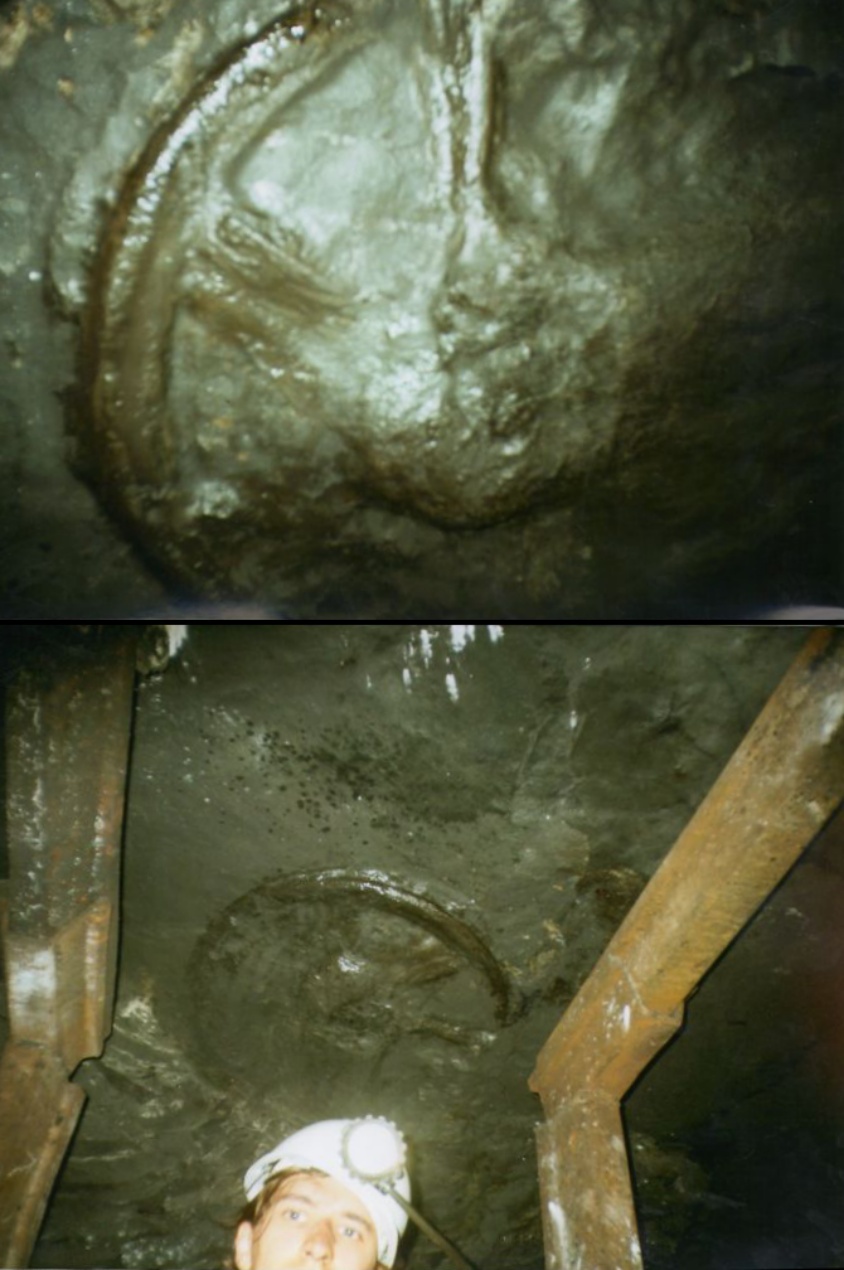A surprising discovery was made in a coal mine in the Ukrainian city of Donetsk in 2008. Because of the structure of the sandstone in which it was lodged, the mysterious artifact that resembles an antique wheel perhaps still remains trapped inside the mine.

Workers were shocked to see what looks to be the impression of a wheel above them on the sandstone ceiling of the tunnel they had just excavated while drilling the coal coking stratum called J3 ‘Sukhodolsky’ at a depth of 900 meters (2952.76 ft) from the surface.
Fortunately, then Deputy Chief V.V. Kruzhilin photographed the strange print and shared it with mine foreman S. Kasatkin, who relayed the news of the discovery along with the stunning photographs.
Without being able to definitively date the strata in which the fossilized wheel imprint was discovered, it was noted that the Rostov region around Donetsk is situated on carboniferous rock dated between 360 and 300 million years ago, and coking coals widely distributed derive from the middle to late Carboniferous, implying that the print could be as old as 300 million years.
According to many theorists, this would imply that a genuine wheel became stuck millions of years ago and disintegrated over time owing to diagenesis, a process in which sediments are lithified into sedimentary rocks, as is usual with fossil remnants.
The following is an excerpt from a letter sent by S. Kasatkin (translated from Ukrainian) in response to his story of seeing the anomalous impression of the wheel discovered by his team of miners in 2008 — he was unsatisfied with the small case made connected the discovery:
“This discovery is not a public relations action. In due course (2008) we as a team of engineers and workers asked the mine director to invite scientists for a detailed examination of the object, but the director, following the instructions of the then mine owner, forbade such conversations and instead Moreover, only ordered to speed up the work (…).”
“I have connections with the people who first discovered these prints and also with those who photographed them. We have over a dozen witnesses. As you understand, access in the mine is strictly limited and obtaining such a license is quite difficult and complicated.”
“The wheel was printed in sandstone (…). Some tried to cut the find with hammers (picks) and bring it safely to the surface, but the sandstone was so strong (firm) that, fearful of damaging the print, they left it in place. At the moment, the mine is closed (officially since 2009) and access to the object is currently completely impossible – the equipment has been dismantled and the layers are already flooded.”
With only this written statement and that of the other witnesses, the photographs remain important evidence of this anomalous archaic mark, but they should be considered worthy of a mention despite any difficulties in verifying the details at the mine.
In addition, according to Kosatkin, the miners uncovered another impression of the wheel around the same time period and in the same tunnel; however, this one was far smaller in size.
Therefore, if the photographic evidence is indeed legitimate (as all the evidence even points out), then one has to wonder how an artificially-made wheel became embedded in such ancient layers, when, according to traditional history, any other advanced civilization like ours has not yet evolved.




